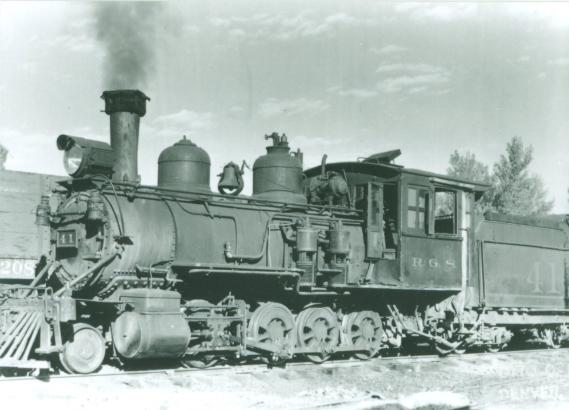By Dennis Hagen (Volunteer and retired staff Archivist)
“What ever happened to John Maxwell’s collection?” This question’s recent appearance on various railroad discussion groups testifies eloquently to the respect Maxwell’s work is accorded by railroad aficionados, especially those of my own rapidly greying generation.
As one of the earliest members of the Rocky Mountain Railroad Club, Maxwell’s service to that organization is legendary. John W. Maxwell was born August 14, 1915, to U.S. Army Captain William and Marguerite Maxwell, in the Ancón Canal district in Panama. He graduated from Colorado State University in 1939. Maxwell was well-known in the U.S. railroading community because of his photographs and drawings of narrow gauge rolling stock and structures. One would be hard-pressed to find a book dealing with western railroads published over the past 50 years that does not contain photo credits of John Maxwell’s work, or reprints of his unique folio drawings. Maxwell died in Wheat Ridge in 1997, leaving behind his extensive collection of photographs and negatives. John Maxwell’s son Doug donated the collection to the Denver Public Library.
The Denver Public Library is proud to announce that the collection is now cataloged and available as a manuscript collection: John Maxwell Papers (WH2436). You can search the online finding aid and access the collection in person in Special Collections and Archives at the Central Library.
Spanning 1871 through 1997, this extensive collection is arranged into five series including Maxwell’s notes, sketches, and research materials. The bulk of the collection is comprised of photographic material, including approximately 13,000 35mm slides, several thousand small-format photographic prints, and more than 7,000 photographic negatives. Oversized material includes 1,200 engineering drawings and architectural plans, maps, blueprints, track diagrams, and similar railroad-related graphics.
In arranging Maxwell’s collection, I was particularly struck when I viewed the final operations of the Rio Grande Southern and the Colorado and Southern as they exploded into vivid 35mm color to eclipse the somber shades of black and white I had become so accustomed to seeing. Forks Creek (Clear Creek Canyon, Jefferson County, Colorado) in particular really came alive! Maxwell’s photographic documentation of such a vast number of small railroads that I had never before encountered also overwhelmed me.
We are pleased to make this extensive material available and hope that Maxwell’s introduction to the public will inspire entirely new generations of railroad hobbyists, rail fans, and historians. We invite you to drop by to see which aspects of this great collection might strike you.



Add new comment